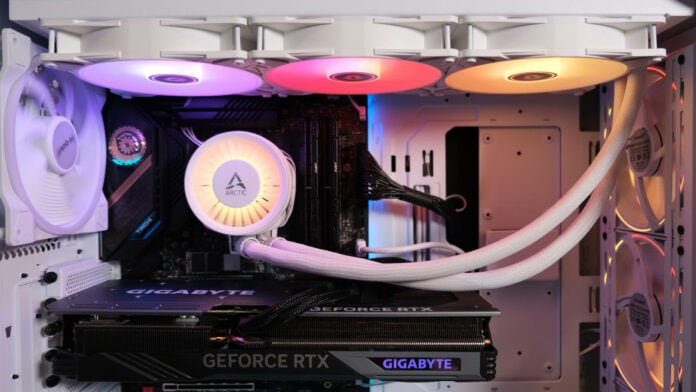There’s an age-old question that’s caused debates throughout the centuries. Until now, it was simply a matter of opinion. Bringing an inarguable answer to the table, the Arctic Liquid Freezer III 420 ARGB AIO cooler is so big that it proves size does, in fact, matter.
Smaller 120mm solutions aren’t as popular as they once were. Sure, they’re great for small form factor builds, but inside anything larger, you’re leaving performance on the table. 140mm fans have long been our preference at Club386 because they avoid that dreaded noise tax when pushing more air. That’s why we welcome Liquid Freezer III 420 ARGB with open arms.
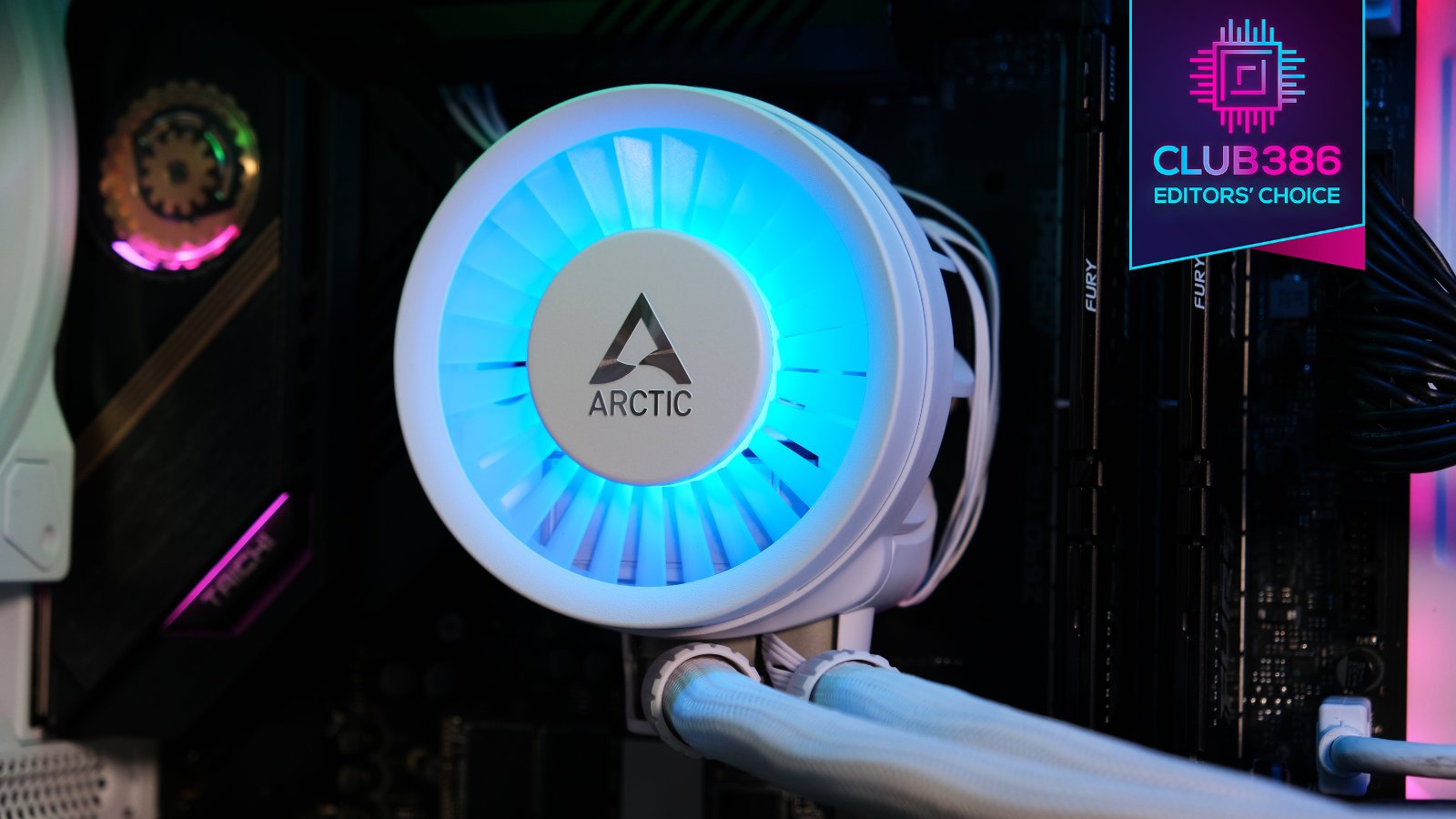
Arctic Liquid Freezer III 420 ARGB
£129.99
Pros
- Chart-topping thermals
- Incl. leading thermal paste
- Beautiful RGB, no software
- Fantastic launch price
- Six-year warranty
Cons
- Short PWM cables
- Can’t rotate faceplate
Club386 may earn an affiliate commission when you purchase products through links on our site.
How we test and review products.
Keen to make a good first impression, even the packaging goes the extra mile. Liquid Freezer III 420 ARGB arrives in a unique heptagon box that looks fantastic on the shelf. However, it’s what’s inside that’s important. All the fans come pre-assembled to the radiator, but the tube of Arctic MX-6 thermal paste shows you’ll have to apply that yourself. Notably, there are only two mounts for Intel LGA1700 and AMD AM4 and AM5 CPUs. Anything older or of a more professional persuasion is out of luck here.
Entering its third generation, the cooler is still a behemoth with a 458×138×38mm (L×W×H) radiator and 450mm tubing. It makes marked improvements over its predecessor, though. Underneath, the VRM fan is much slower, between 400 and 2,500RPM, helping to tame any unnecessary whines. The pump, on the other hand, is quite a bit faster with an 800 to 2,800RPM range to keep temps in check.
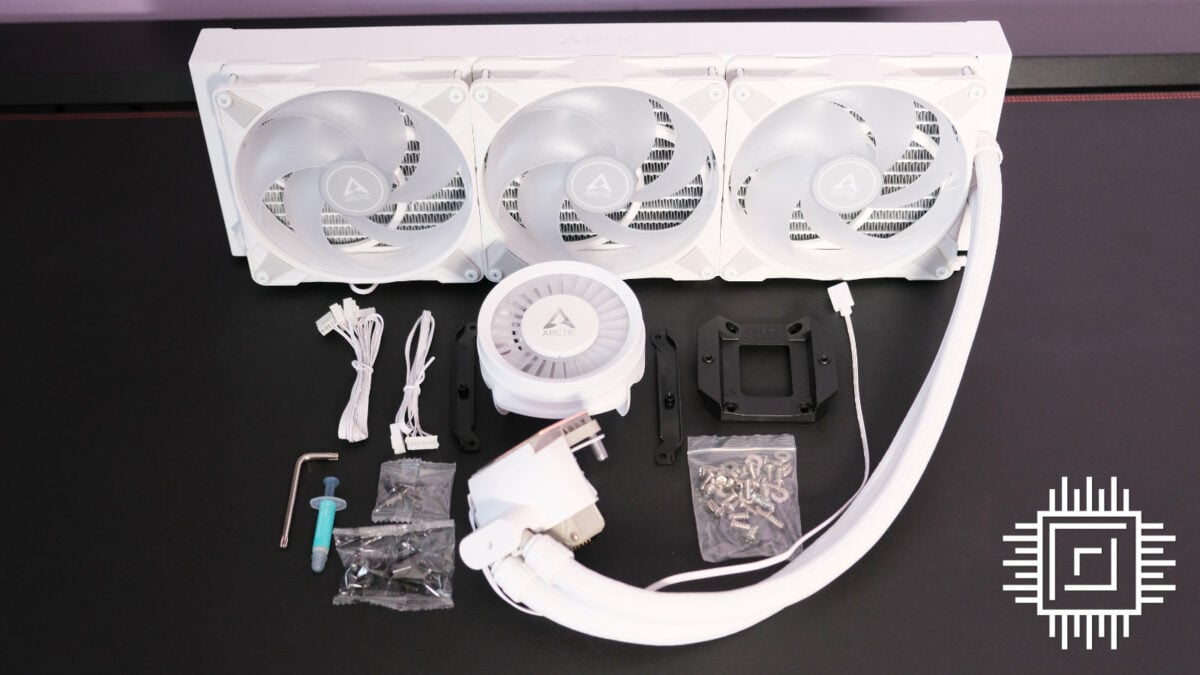
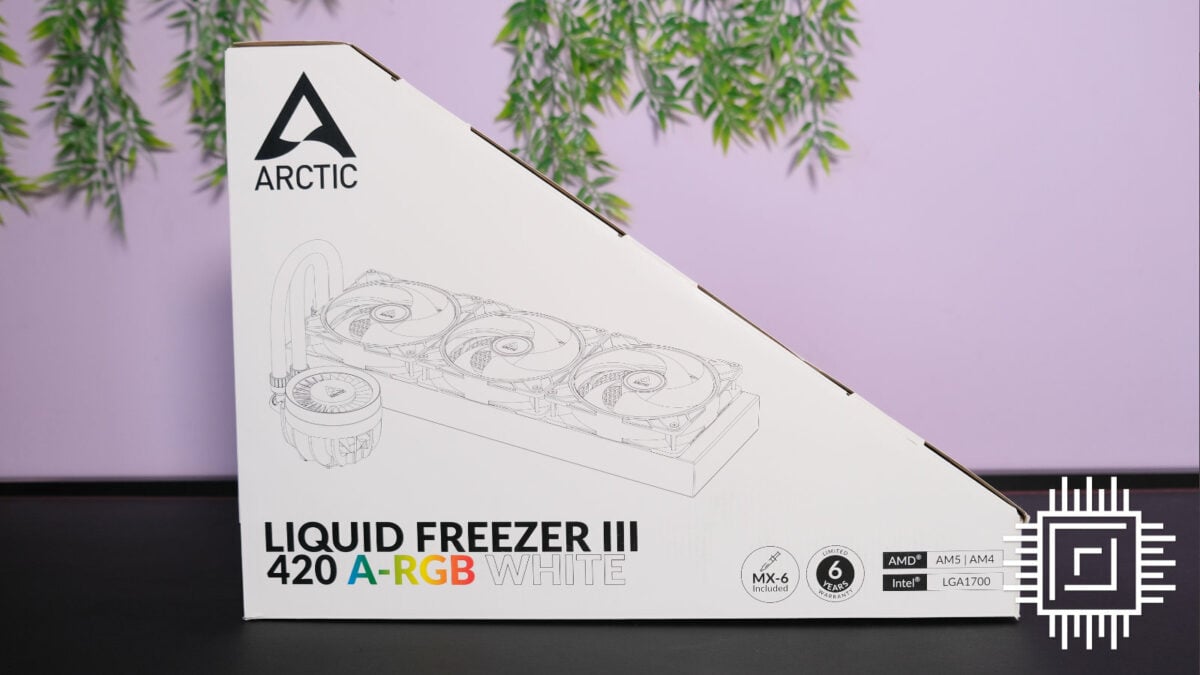
Thankfully, Freezer II’s strange-looking pump is a thing of the past. Freezer III instead features a more fetching turbine-inspired design. Since the face plate attaches via magnets, it even opens up the potential for hot-swappable alternatives. Until then, I’ll just settle for the repairability factor.
The water block looks particularly gorgeous on our white test sample, with colourful lighting shining through. Fear not if you prefer black builds; you can pick a darker model with or without ARGB. All are available in 240mm, 360mm, 280mm, and 420mm versions. For as much selection as there is here, Arctic doesn’t provide a white model without lighting. In this instance, you’re best just turning it off on the ARGB version.
Lighting control comes directly from your motherboard software. It’s quite impressive to plug the AIO in and see all three 140mm P14 PWM A-RGB fans synchronise with be quiet! Light Wings and Dark Base 701 automatically. I remember the days when mixing and matching brands required several different apps, and even then, it never married up nicely.
Built with radiators in mind, these fans deliver 69.9CFM airflow and only ask for 2W in return. Sure, it’s roughly 7% less than the highest airflow we’ve tested, but it sips 58% less power as a result. It’s supremely efficient in its performance. Tack on 2.0mmH20 of static pressure, and Arctic’s in-house solution is primed and ready to go the distance.
| MSRP | Amazon (until May 20, 2024) | |
|---|---|---|
| Liquid Freezer III 240 (Black) | £91.99 | £53.89 |
| Liquid Freezer III 280 (Black) | £99.99 | £60.82 |
| Liquid Freezer III 360 (Black) | £104.99 | £66.98 |
| Liquid Freezer III 420 (Black) | £109.99 | £71.60 |
| Liquid Freezer III 240 ARGB (Black) | £99.99 | £62.36 |
| Liquid Freezer III 280 ARGB (Black) | £108.99 | £71.60 |
| Liquid Freezer III 360 ARGB (Black) | £117.99 | £76.99 |
| Liquid Freezer III 420 ARGB (Black) | £126.99 | £83.92 |
| Liquid Freezer III 240 ARGB (White) | £101.99 | £63.90 |
| Liquid Freezer III 280 ARGB (White) | £110.99 | £73.14 |
| Liquid Freezer III 360 ARGB (White) | £120.99 | £76.99 |
| Liquid Freezer III 420 ARGB (White) | £129.99 | £84.69 |
Pricing isn’t the simplest here, hence the table. There’s a premium for ARGB and another for the white version. It’s no surprise, given how difficult it is to get a uniform mold with shades of white, but we’ve been spoiled with price parity from brands like be quiet! before. Generally, MSRP is about the same as Liquid Freezer II, with a slight uptick for colourful models.
Fortunately, the prices aren’t stuck at the recommended retail, even at release. To celebrate Arctic’s 23rd anniversary, the company has discounted the entire range for the first three months. Until May 20, 2024, you can get them all between 34% and 41% cheaper. The best savings are on the 240mm models, but promotional pricing is aggressive across the board. You won’t find many 420mm versions of this calibre under the £100 mark.
Installation
Arctic makes installing Liquid Freezer III 420 ARGB as simple as possible on our Intel LGA1700 test platform. Your first task is to remove the default retention bracket on your motherboard using the star-shaped Allen key provided. We’ve not seen this method before, but Arctic believes its solution makes for a more even contact point for the cold plate than the metal clip we’re all familiar with. Covering the entire CPU symmetrically supposedly helps with heat dissipation. Keep hold of the backplate, though, as you’ll need it to attach Arctic’s mounts.
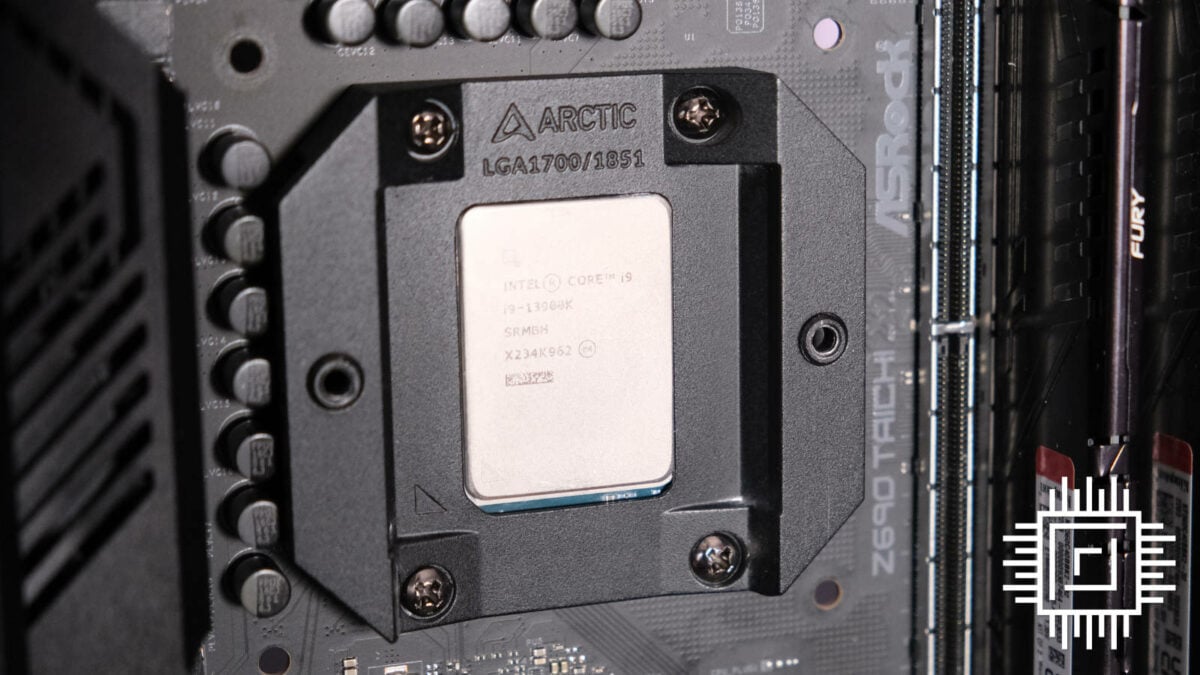
The Intel LGA1700 contact plate is a bulky square that surrounds your chip, while AM4/5 uses two mounting clips on top of spacers. You can’t really get either wrong. Intel’s screw holes only line up in a specific orientation, and AMD’s solution marks the clips L for left and R for right. Make sure to pop the CPU in before the mount that’ll hold it in place. Once you’re all bracketed up, apply the Arctic MX-6 thermal paste.
Before you overlay the heatspreader, you have a choice to make. Arctic provides you with two cables that connect directly to your pump. One splits into three to plug into the Pump, CPU Fan, and VRM headers on your motherboard. This allows you to control each individually via PWM. The other is a single all-in-one cable that synchronises the three. I recommend the latter.
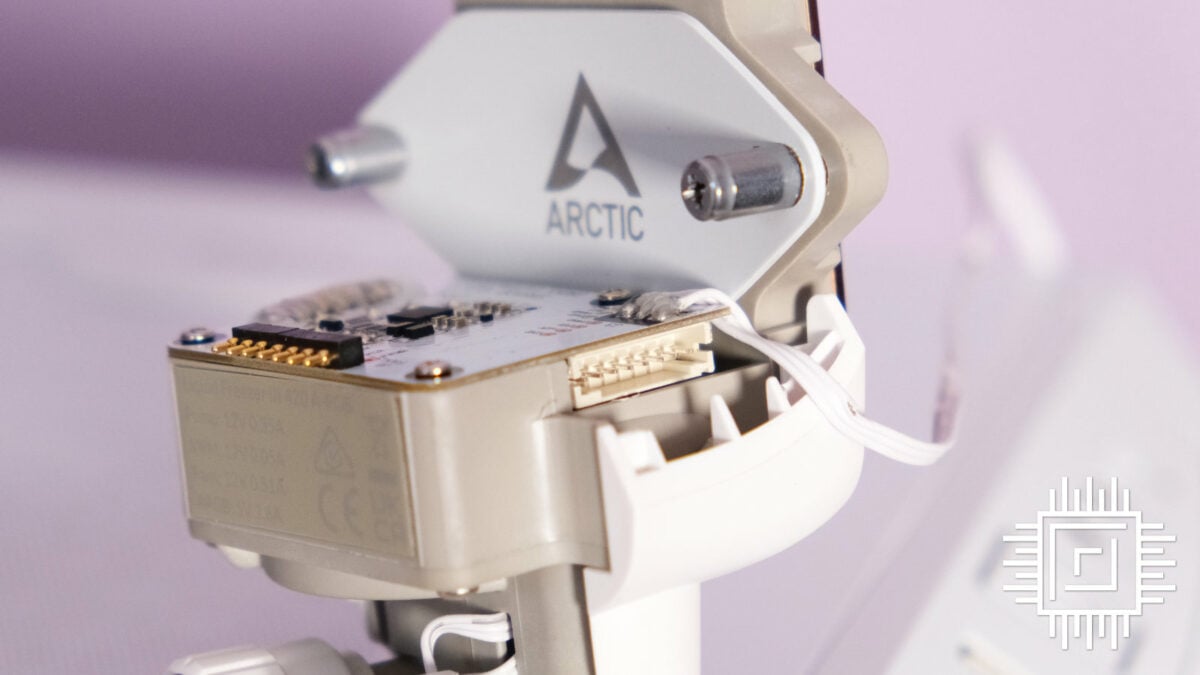
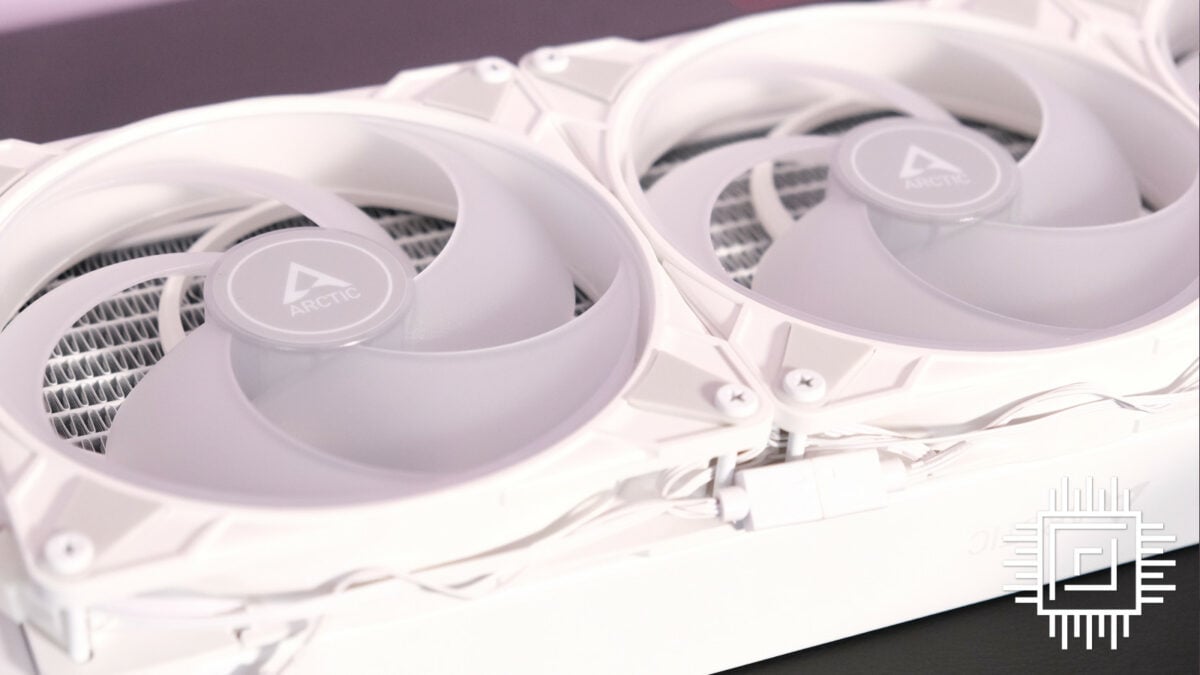
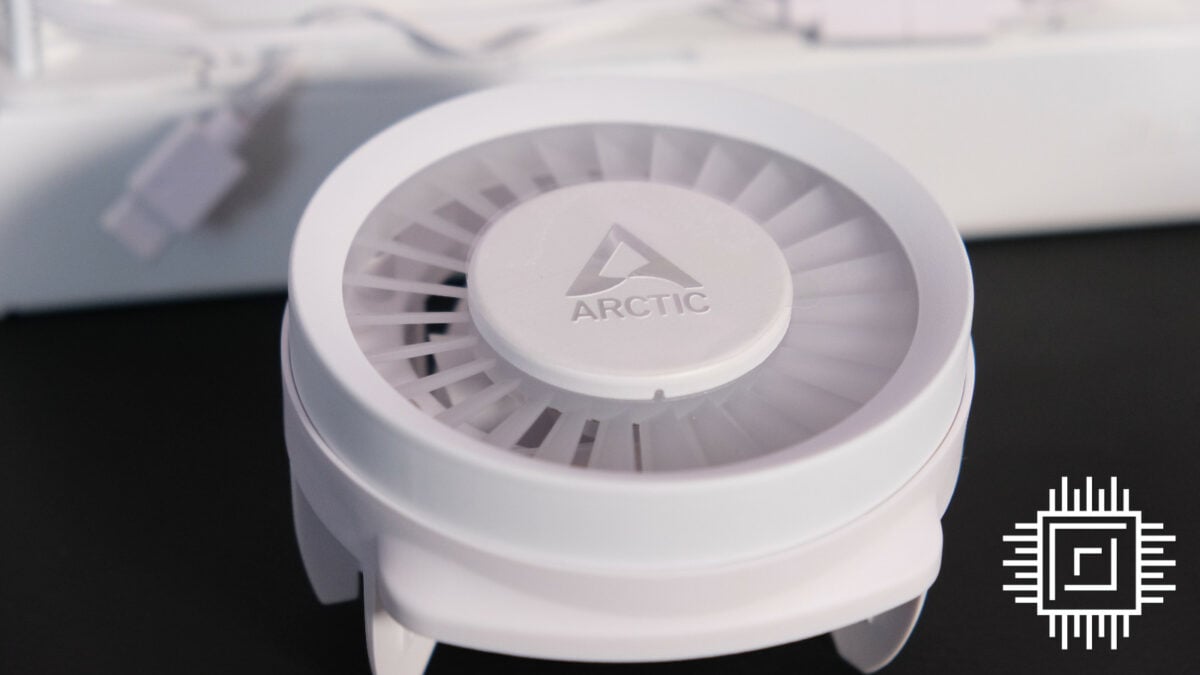
The individual PWM option isn’t the most elegant. Since you can’t rotate the faceplate, you’re forced to position the block with the tubing at the bottom if you want the Arctic logo upright. This also places the wires at the bottom. They’re not the longest cables, especially after you’ve fed them around the waterblock to the nearest grommet. Considering motherboards usually only feature two fan headers side-by-side, you don’t have many options other than to stretch your wire, so it doesn’t look neat. You could use a fan splitter, but that defeats the purpose of controlling each in isolation.
In the land of shoulda, woulda, coulda, I’d have preferred Arctic to place the cables at the top and make the faceplate rotatable. It wouldn’t go amiss to provide extensions in the box or make the multi-wire longer, too. Whichever wire you choose, it’s difficult to change your mind about your preference when the water block is on, so just make sure you’re certain.
After that, simply secure the pump to the CPU, screw in the radiator, and slide on the faceplate. The latter snaps on magnetically without any faff.
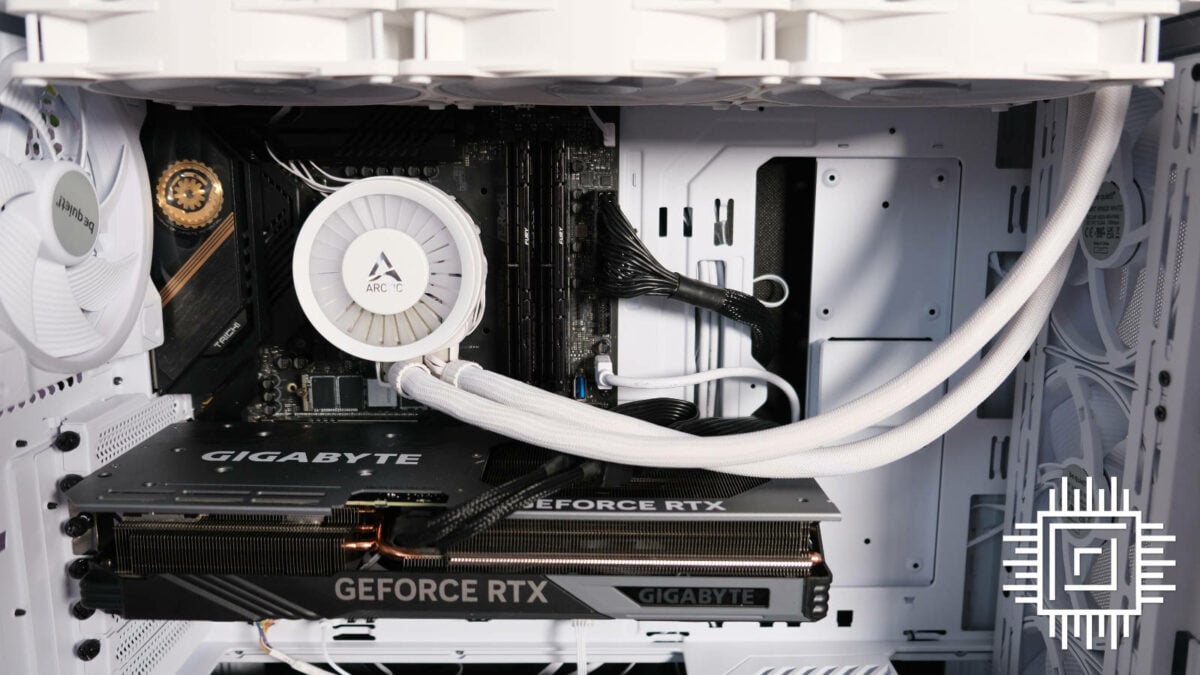
Performance
The beating heart of our test bench is an Intel Core i9-13900K. While it can reach advertised heights of 253W, maintaining this power level is a different kettle of fish. For that, we need some cooling muscle in our system to stop performance from dropping off.
As standard with our tests at Club386, we put the Arctic Liquid Freezer III 420 ARGB AIO through the wringer using Cinebench R23. During the benchmark, we record scores, noise, and temperatures at 600, 1,200, and max RPM, which is 1,900RPM in this case.
Noise levels
| Type | Noise at 600RPM | Noise at 1200RPM | Noise at max RPM | |
|---|---|---|---|---|
| Arctic Liquid Freezer 420 ARGB | Liquid | 30.2 | 38.3 | 46.9 |
| MSI MAG CoreLiquid E360 | Liquid | 31.2 | 40.2 | 52.6 |
| be quiet! Pure Loop 2 280 | Liquid | 31.1 | 34.8 | 46.0 |
| Noctua NH-D15 chromax.black | Air | 30.8 | 39.6 | 44.2 |
| be quiet! Dark Rock Elite | Air | 30.2 | 33.7 | 41.8 |
Much like be quiet! Pure Loop 2 280, our AIO benefits from bigger 140mm fans. Even though all blowers rotate at the same speed in the first two categories, bigger blades usually spin quieter. Considering there are three of the big’uns instead of two, and they run slightly faster with a max 1,900RPM, Arctic Liquid Freezer 420 ARGB is supremely silent, comparatively speaking.
I especially appreciate the 2,500RPM VRM fan and 2,800RPM pump. As you’ll see below, neither hinders its cooling ability, but both prevent that noticeable whirr you get with higher-speed rivals. At slower speeds, it’s truly an acoustic alternative to air coolers.
Cinebench scores
| 253W 600RPM | 253W 1200RPM | 253W Max RPM | 153W 600RPM | 153W 1200RPM | 153W Max RPM | |
|---|---|---|---|---|---|---|
| Arctic Liquid Freezer 420 ARGB | 36,185 | 36,787 | 36,990 | 31,862 | 31,810 | 31,979 |
| MSI MAG CoreLiquid E360 | 36,730 | 36,830 | 37,294 | 32,085 | 32,285 | 32,266 |
| be quiet! Pure Loop 2 280 | 36,846 | 37,001 | 36,974 | 32,010 | 32,190 | 32,187 |
| Noctua NH-D15 chromax.black | 36,657 | 36,831 | 36,991 | 31,674 | 32,058 | 32,183 |
| be quiet! Dark Rock Elite | 36,544 | 36,614 | 36,668 | 31,899 | 32,126 | 32,127 |
Pitting Arctic Liquid Freezer 420 ARGB against our Cinebench R23 test, the cooler sits close to the standard 38k score at 253W and 32k at 153W. Arctic has clearly optimised its cooler, as there’s virtually nothing between it and various AIO rivals. As the biggest one we’ve tested, I expected to see it surpass MSI MAG CoreLiquid E360 rather than slip behind, but you’re not likely to feel these differences in real-world performance.
Temperatures
| 253W 600RPM | 253W 1200RPM | 253W Max RPM | 153W 600RPM | 153W 1200RPM | 153W Max RPM | |
|---|---|---|---|---|---|---|
| Arctic Liquid Freezer 420 ARGB | 90.1 | 81.5 | 79.2 | 68.5 | 63.4 | 61.2 |
| MSI MAG CoreLiquid E360 | 87.2 | 86.0 | 82.0 | 71.9 | 62.2 | 59.7 |
| be quiet! Pure Loop 2 280 | 91.8 | 89.3 | 85.5 | 76.7 | 65.9 | 61.8 |
| Noctua NH-D15 chromax.black | 93.1 | 91.6 | 89.8 | 75.7 | 67.6 | 66.1 |
| be quiet! Dark Rock Elite | 94.4 | 93.0 | 91.8 | 77.6 | 70.8 | 67.7 |
Keeping an Intel Core i9-13900K under 80ºC while running at 253W is something we haven’t seen before. What used to only be possible through undervolting and reducing TDP can be done at full power, so long as you sport this almighty cooler. I have a feeling the superior MX-6 thermal paste might’ve helped with a degree or two, as well, and every little helps.
Overall, there isn’t a huge difference in performance or temperatures between the max 1,900rpm and 1,200rpm. Considering the drastic drop in noise, it’s probably worth sticking with a lower fan speed in all but the most extreme situations.
Conclusion
Arctic Liquid Freezer III 420 ARGB is a wonderfully modern revamp to a series we already love. Whereas Liquid Freezer II looks distinctly dated just two years following its release, I can’t see this one going out of fashion any time soon. Styles change quickly, though, so I could very well eat my words in half a decade.
There aren’t many brands that offer such a comprehensive range of solutions. In fact, it’s refreshing to test a 420mm model rather than complaining about the lack of one. Of course, you’ll need to check your case and CPU compatibility before grabbing a rad of this magnitude, but there’s quite literally something for everyone in Arctic’s line-up.
With no extra software, it’s a blessing when our PCs are already filled with apps we don’t want. Instead, it just synchronises and piggybacks off your motherboard’s software. We also love the included tube of thermal paste. At 0.8g, you’ll only get enough for one application, but you know exactly what you’re putting on your CPU rather than pre-applied stock solutions.
In particular, Liquid Freezer III 420 ARGB performance doesn’t disappoint. It boasts unrivalled temperatures at full pelt on top of a Core i9-13900K of all CPUs. That’s not an easy beast to tame. It even allows you to split PWM signal controls, although this depends on whether your wires can reach a header. Complete with a respectable MSRP and an even more enticing launch discount, it has no rivals at this price point.
Verdict: a worthy upgrade to an award-winning series, Liquid Freezer III delivers all that’s good about AIO cooling without breaking the bank.


